Leading and partnering to deliver COVID-19 tools to the world
Facing a global pandemic
The coronavirus disease (COVID-19) pandemic caused profound disruption, devastation and loss with broader sustainable development consequences. In the early days of the pandemic, there was a shared sense that the unthinkable was becoming reality. However, for many public health experts and leaders, the pandemic was unprecedented but not unforeseen: it had not been a matter of if a pandemic on this scale would occur, but rather a matter of when.
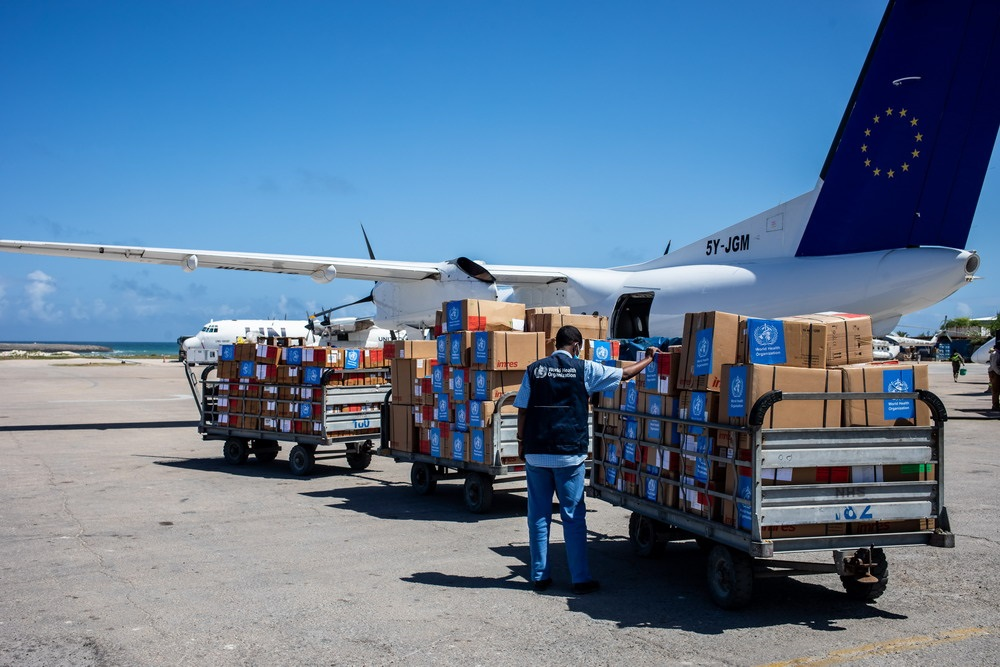
The ACT-Accelerator partnership has led the fastest, most coordinated, and successful global effort to deliver tools to fight a disease.
Credit: WHO
The pronounced need for leadership in facing this existential global health threat was immediate and, as with SARS-CoV-2 circulation, has remained constant. The World Health Organization (WHO) rose to this challenge, in close collaboration with partners and Member States. The pandemic continues to underscore the importance of a coordinated global response, global leadership and the significance of WHO’s mission to promote health, keep the world safe and serve the vulnerable.
The pandemic quickly and clearly demonstrated the need for a central coordinating authority in health. WHO’s collective expertise, close links with countries and partners, and mandate empowers the Organization to be the technical authority for health: it generates and collates data; it provides guidance; it tracks the disease, trends and variants; it helps countries to develop and implement national COVID-19 response plans; and it facilitates regulatory review. In service to countries and, in particular, the most vulnerable people and communities, WHO has provided end-to-end technical and operational support.
Coordination in a crisis
Early in the COVID-19 pandemic, it became clear that the scale of this pandemic would far surpass any other pandemics in living memory. WHO and partners recognized that something innovative was urgently needed for such an unparalleled health crisis. The Access to COVID-19 Tools Accelerator (ACT-A) was launched in April 2020, to accelerate the development, production and equitable access to COVID-19 tests, treatments and vaccines. The strength of this global collaboration was its ability to leverage the expertise and reach of each constituent organization, including WHO, with its vast repository of health knowledge, convening power and footprint in more than 150 countries.
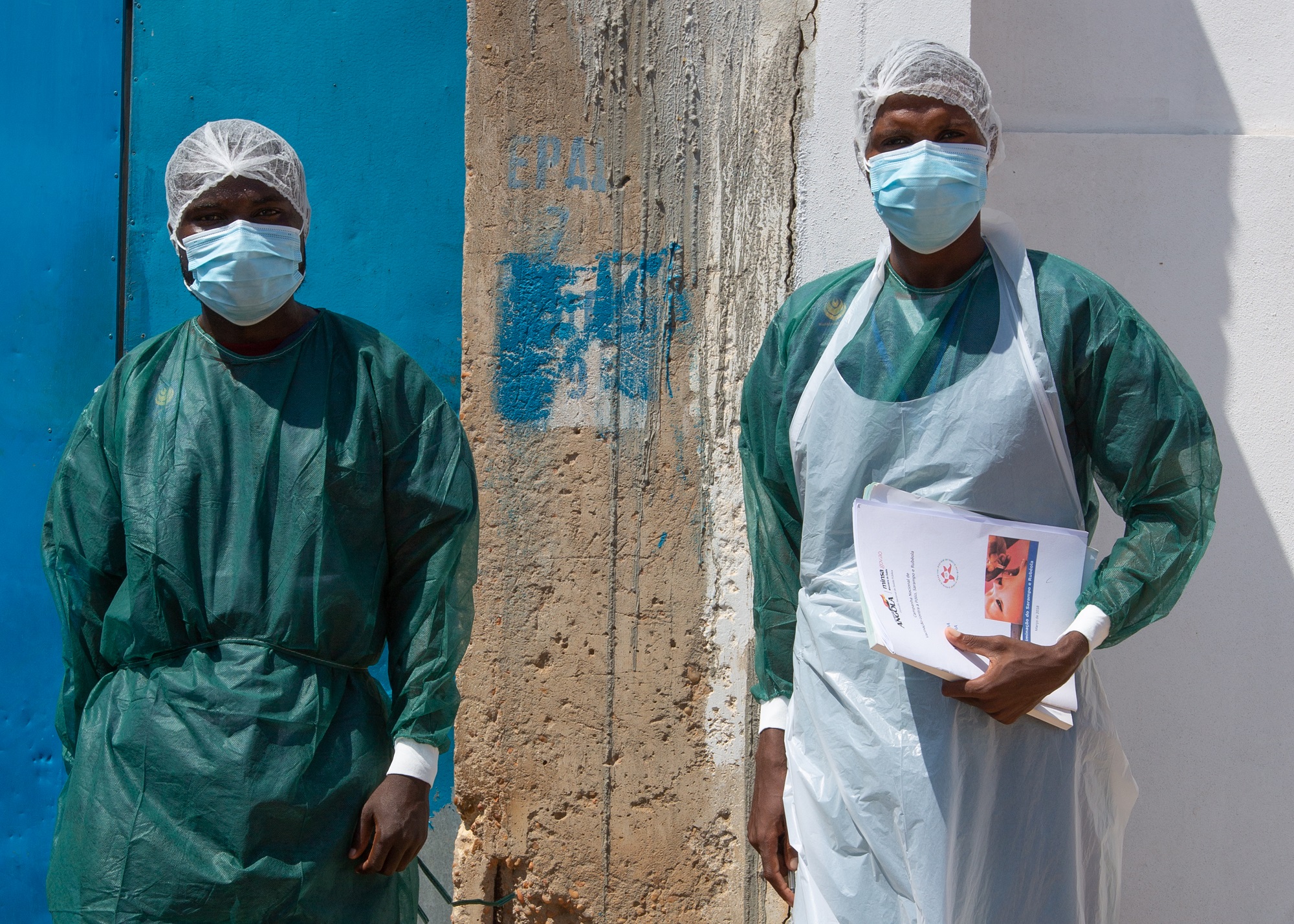
WHO and partners have delivered COVID-19 tools to all corners of the world, including US$463 million worth of personal protective equipment.
Credit: WHO
An extraordinary public health challenge called for an extraordinary partnership: ACT-A
ACT-A brings together 10 global health organizations – Coalition for Epidemic Preparedness and Innovations (CEPI); Foundation for Innovative New Diagnostics (FIND); Gavi, the Vaccine Alliance; The Global Fund; Unitaid; Wellcome; WHO; World Bank; Bill & Melinda Gates Foundation; and United Nations Children’s Fund (UNICEF) – and a number of other partners, including civil society organizations and industry representatives. Each organization leads in its own area of strength in the value chain that runs from research and development, through regulatory assessment and approval, to scaled-up manufacturing, market shaping, procurement, delivery and operational support.
ACT-A has made a powerful impact, driving and accelerating the research and delivery of COVID-19 health tools. Thanks to an unprecedented collaboration between the global research and development community and the private sector, the first safe and effective COVID-19 vaccine, authorized by WHO for emergency use, was delivered just 326 days after the first SARS-CoV-2 genetic sequence was published. This incredible effort built on many years of previous research into coronaviruses and vaccine technology platforms. The vaccine arm of ACT-A, the COVAX Facility, delivered its first shipment of vaccines to Ghana just 80 days after vaccines were first rolled out in some high-income nations. This stands in stark contrast to what has unfolded in previous global health crises. During the AIDS epidemic for example, it took more than a decade for lifesaving antiretrovirals to become available in sub-Saharan African countries, where they were urgently needed.
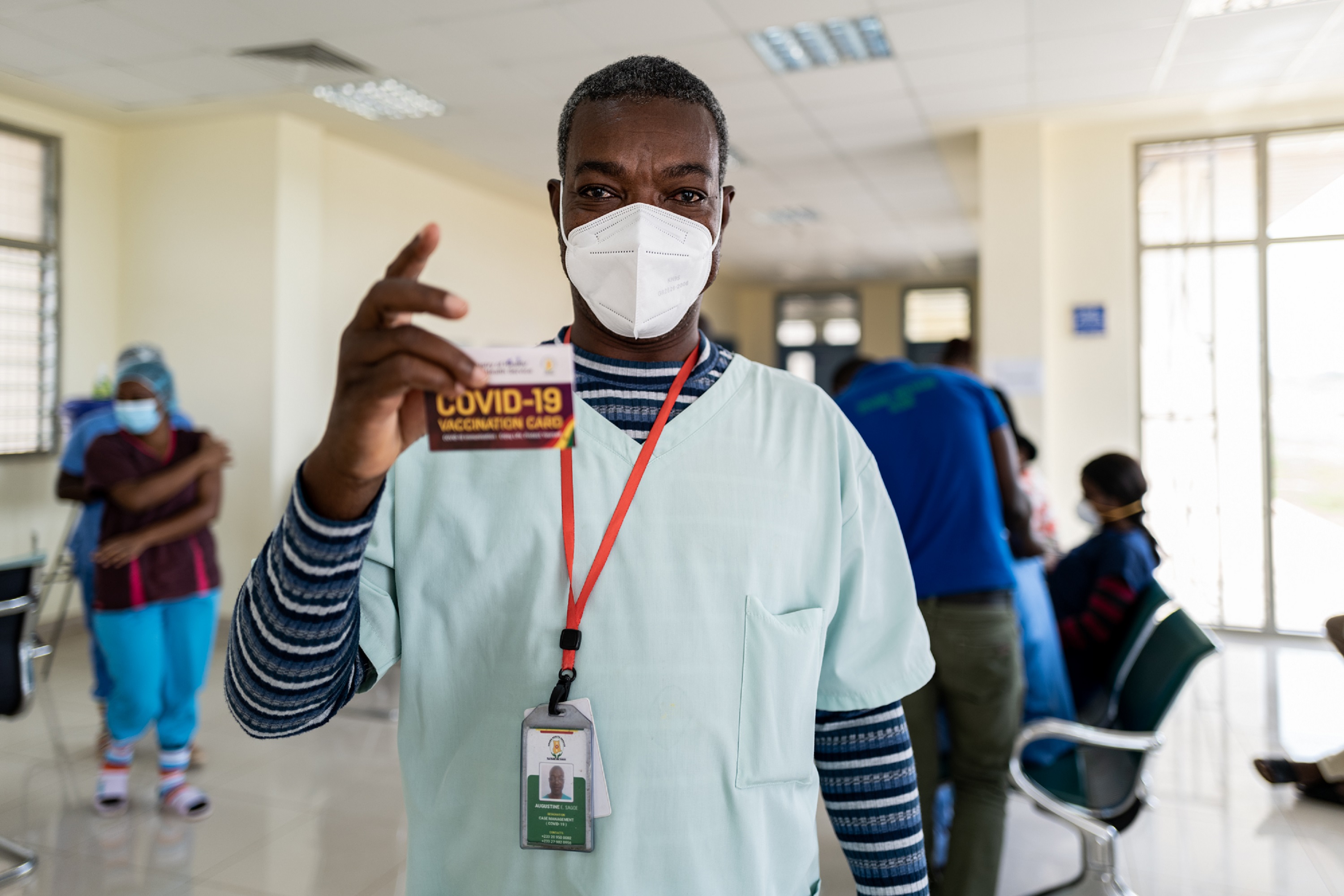
Augustine Sagoe, a laboratory scientist in Ghana, holding up his vaccination card on 4 March 2021 after receiving a COVID-19 vaccine shipped by COVAX, in the first shipment to countries.
Credit: WHO
Achievements of ACT-A (as of April 2022):
raised almost US$ 20 billion
delivered 1.4 billion doses of vaccines
helped to halve the cost of diagnostic tests
delivered 150 million tests and US$ 7.9 million worth of medicines
delivered US$ 463 million worth of personal protective equipment (PPE).
WHO: the backbone of ACT-A
Each organization has a distinct leadership function in the multilateral partnership that is ACT-A, but WHO’s role is critical due to its capacity to coordinate, collaborate, convene and enable. WHO runs and hosts the ACT-A Hub Secretariat and, most importantly, it is the thread that brings together all partners. Where WHO has the mandate to lead within ACT-A, the Organization’s leadership has been clearly visible.
WHO strives to be a moral voice, advocating for the health of the world’s people, and leads by its legitimacy in representing the needs of its 194 Member States. WHO jointly established ACT-A’s equitable allocation system, the COVAX Humanitarian Buffer and expedited regulatory approval in countries by ensuring that vaccines were safe and efficacious under its Emergency Use Listings procedure. WHO also created the first and only global vaccine injury compensation mechanism, the no-fault compensation programme.
Multifaceted leadership
Drawing on its mandate and long-standing strengths – including mobilizing partners and expert networks – WHO has played a central and multifaceted role in forging a path forward in the pandemic.
WHO’s support to countries has encompassed every aspect of the emergency response, from gathering the fundamental data needed to drive evidence-based decision-making and inform the rapid formulation of guidelines, through to the translation and application of that knowledge, and the delivery of key interventions and supplies on the ground.
Communicating critical health information, sharing analyses and translating guidance to all audiences is an essential WHO function. WHO held regular briefings for Member States to rapidly and consistently communicate key messages about risk and effective response measures, while developing a broad range of tailored communication materials and initiatives to engage with specific communities. This service proved more essential than ever during the pandemic, with the epidemic of mis- and disinformation, coined an “infodemic”. WHO also worked to build capacity through established and innovative approaches rooted in social sciences, enabling informed decision-making. Since its inception and throughout the COVID-19 pandemic, WHO has also focused on protecting the vulnerable, including through vaccination, to ensure that no one is left behind.
A voice and lifeline for low-income countries
External factors and other structural challenges have limited some of the partnership’s impacts on global equity ambitions. Nevertheless, many low-income countries have benefited from its extraordinary achievements.
Despite tireless campaigning and calls for global solidarity from WHO’s Director-General Dr Tedros Adhanom Ghebreyesus and other leaders, “vaccine nationalism” emerged as a major issue in 2021, with wealthy countries scrambling to secure doses. Domestic-focused responses in many high-income countries, paired with financing and supply constraints, held back the potential for truly collective action through ACT-A.
For every 100 vaccine doses administered in high-income countries, fewer than 5 doses have been administered in low-income countries. This inequitable approach has prevented the world from ending the acute phase of the COVID-19 pandemic because no country is safe until all countries are safe. Vaccine supplies were further constrained by bilateral deals between governments and companies, broken agreements, export controls and late delivery timelines. These major obstacles have resulted in global COVID-19 vaccine, testing and treatment coverage targets being missed.
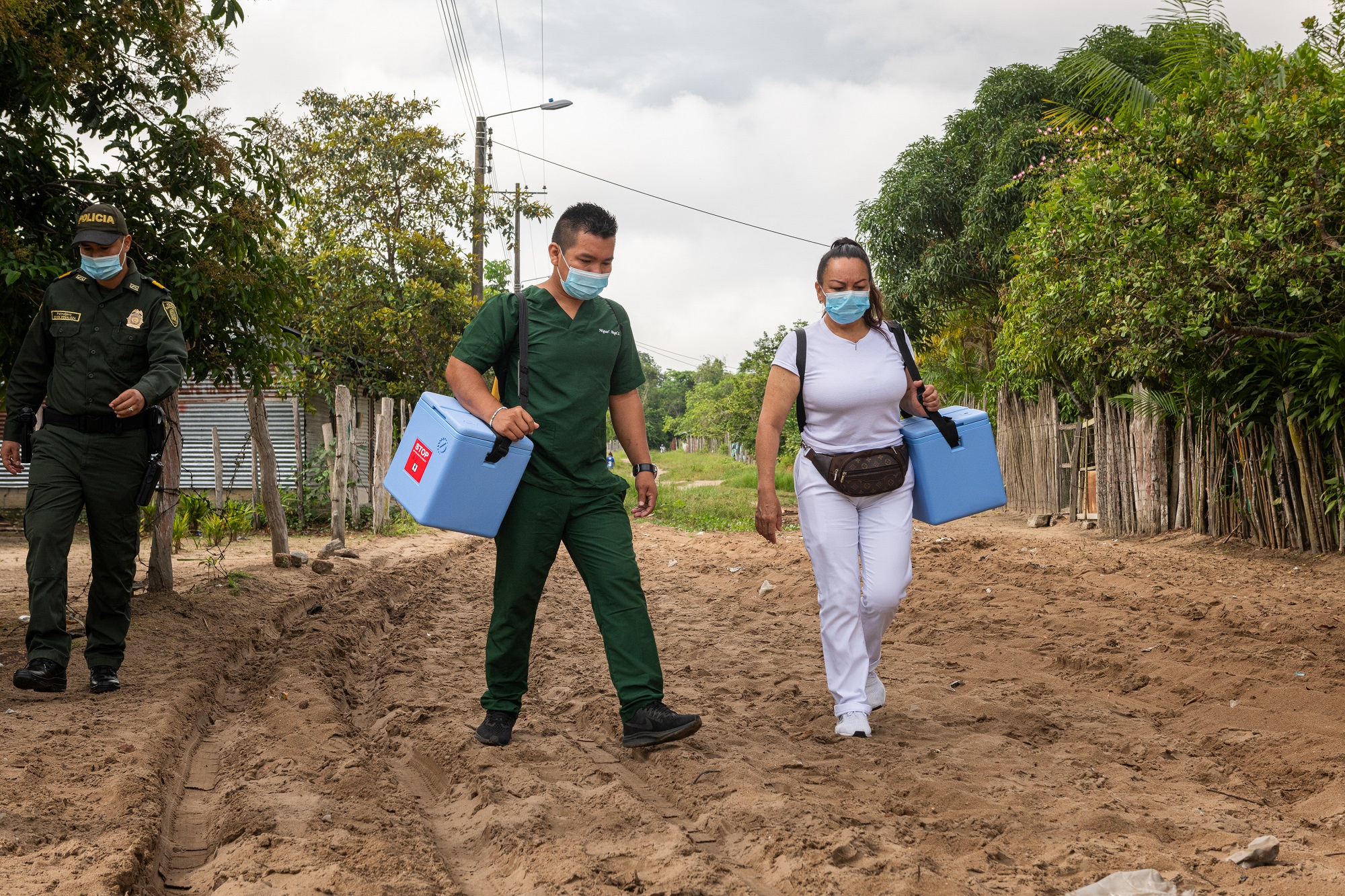
About 85% of vaccine doses provided to COVAX have gone to low- and middle-income countries.
Credit: WHO
Despite the challenges of vaccine nationalism, ACT-A has been a lifeline for low-income nations: 80% of the vaccines that have been delivered to low-income countries have come from COVAX, which also secured funding in record time to support 92 low- and middle-income countries under its “advance market commitment”. Of the one billion doses delivered by COVAX, 85% have gone to low- and middle-income countries.
Beyond ACT-A, WHO has advanced equitable access through complimentary partnerships to establish technology transfer hubs, such as the first COVID-19 mRNA vaccine technology transfer hub in South Africa, bolstered local production capacities, and coordinated licensing and intellectual-property-sharing mechanisms, including the COVID-19 Technology Access Pool (C-TAP).
Collaborative and connected leadership
The pandemic tested the mettle of the most resilient leaders and organizations. WHO’s leadership style is distinctive: it is collaborative rather than unilateral, and connecting rather than commanding. “We’re no longer in a hierarchal system, we’re in an ecosystem,” explains Dr Mike Ryan, Executive Director of WHO’s Health Emergencies Programme. “We’ve got a complex threat and we need an ecosystem-type response – a response that’s agile, fast, adapts and scales quickly.”
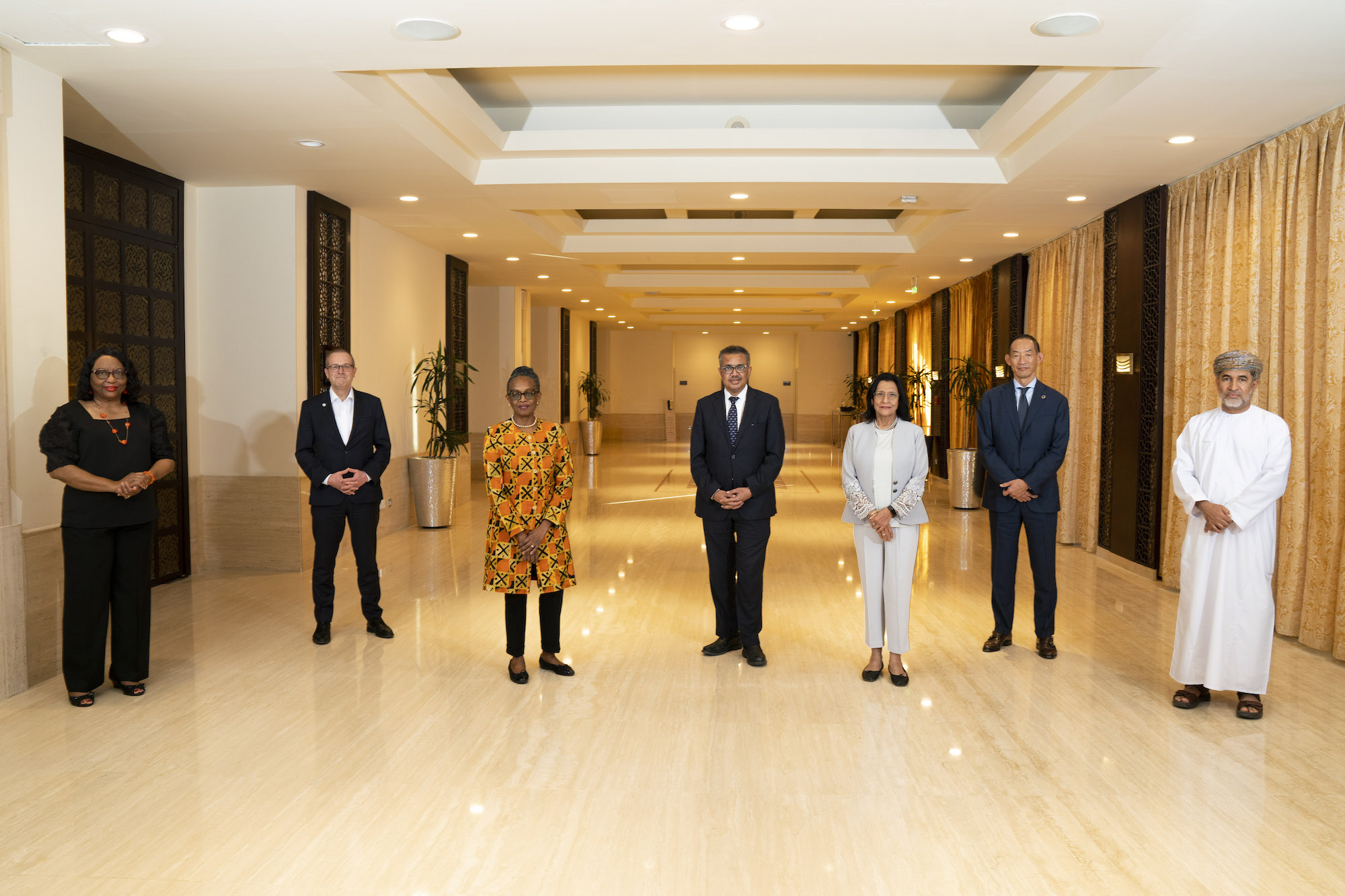
To ensure a coordinated global response to the pandemic, WHO has relied on its extensive field presence, and strong leadership at the regional level, with its six regional directors.
Credit: WHO
Part of what enabled WHO to pivot to COVID-19 quickly and at scale were the foundational changes the Organization had made to be more agile and fit-for-purpose, as well as the creation of new entities, such as the Science Division and Emergency Preparedness Division. These proved to be indispensable. Other changes relevant to WHO’s role in ACT-A were a greater emphasis on partnerships to enhance WHO’s work and the strengthening of WHO’s operational capacity, with stronger and scalable field capacities.
WHO’s experience with recent Ebola epidemics and other health emergencies also provided valuable lessons that were applied during the COVID-19 pandemic, for example, in the R&D blueprint, vaccine development, the “Emergency Use Listing” procedure and trials for therapeutics.
Looking ahead
COVID-19 has exploited the world’s weaknesses, but has provided us with an opportunity to rebuild. ACT-A has shown that the world needs a global, end-to-end platform to accelerate the development and equitable distribution of medical countermeasures during pandemics. This platform should be anchored within a revitalized and inclusive global health security architecture that is enabled by strong governance, systems and financing, with WHO at its centre.
“ACT-A shows us what is possible,” says WHO’s Lead for ACT-A Dr Bruce Aylward. “It has painted a very exciting picture. But I wonder, what more could we do?”
“If we could leverage this much from putting together these agencies designed for other purposes, then just imagine where we could get to if we had a sustainably- financed WHO, clarity on the systems involved with a proper global health governance, a treaty and a council.”
It will take strong international leadership, global collaboration and solidarity to translate the lessons of COVID-19 into an effective, equitable and coherent health emergency ecosystem. Renewed political commitment, robust health emergency systems and more sustainable financing will provide the overarching framework and necessary resources to further strengthen and empower WHO’s leadership and realize a healthier, safer and fairer future.
